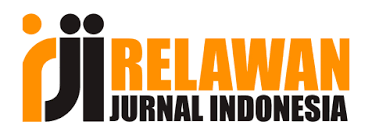The Place of Technology during Teaching Grammar, Reading, Listening, and Speaking in the Education System
Keywords:
quizzes, presentations, call activities, authentic videos, different methods with technology, authenticity
Abstract
This article discusses the role of modern technologies and the benefits of using technology in the education system. Especially for teaching grammar, listening, speaking, and reading comprehension.
References
1. Abdel Latif, M. M. (2017). Teaching grammar using inductive and communicative materials. Cambridge university press.
2. Hanson-Smith, E. (2018). CALL (computer-assisted language learning) materials development. In J. I. Liontas (Ed.), The TESOL encyclopedia of English language teaching.
3. Lin, H. (2014). Establishing an empirical link between computer-mediated communication (CMC) and SLA: A meta-analysis of the research. Language Learning & Technology.
4. Kiddle, T. (2013). Developing digital language learning materials. In B. Tomlinson (Ed.), Developing materials for language teaching. Bloomsbury Publishing.
5. Mishra, P., & Koehler, M. J. (2006). Technological pedagogical content knowledge: A framework for teacher knowledge. Teachers College Record.
6. Mccullagh, M. (2017). Authentic video: Using a text-driven approach. In A. Maley & B. Tomlinson (Eds.), Authenticity in materials development for
7. Mukundan, J., Zarifi, A., & Kalajahi, S. A. R. (2016). Developing reading materials for ESL learners.
8. Timmis, I. (2016). Materials to develop speaking skill. In M. Azarnoosh, M. Zeraatpishe, A. Faravani, & H. R. Kargozari (Eds.), Issues in materials development.
2. Hanson-Smith, E. (2018). CALL (computer-assisted language learning) materials development. In J. I. Liontas (Ed.), The TESOL encyclopedia of English language teaching.
3. Lin, H. (2014). Establishing an empirical link between computer-mediated communication (CMC) and SLA: A meta-analysis of the research. Language Learning & Technology.
4. Kiddle, T. (2013). Developing digital language learning materials. In B. Tomlinson (Ed.), Developing materials for language teaching. Bloomsbury Publishing.
5. Mishra, P., & Koehler, M. J. (2006). Technological pedagogical content knowledge: A framework for teacher knowledge. Teachers College Record.
6. Mccullagh, M. (2017). Authentic video: Using a text-driven approach. In A. Maley & B. Tomlinson (Eds.), Authenticity in materials development for
7. Mukundan, J., Zarifi, A., & Kalajahi, S. A. R. (2016). Developing reading materials for ESL learners.
8. Timmis, I. (2016). Materials to develop speaking skill. In M. Azarnoosh, M. Zeraatpishe, A. Faravani, & H. R. Kargozari (Eds.), Issues in materials development.
Published
2023-11-06
How to Cite
Rakhmonova Dildora Bahodir kizi. (2023). The Place of Technology during Teaching Grammar, Reading, Listening, and Speaking in the Education System. Central Asian Journal of Literature, Philosophy and Culture, 4(11), 20-23. https://doi.org/10.51699/cajlpc.v4i11.1041
Section
Articles

















